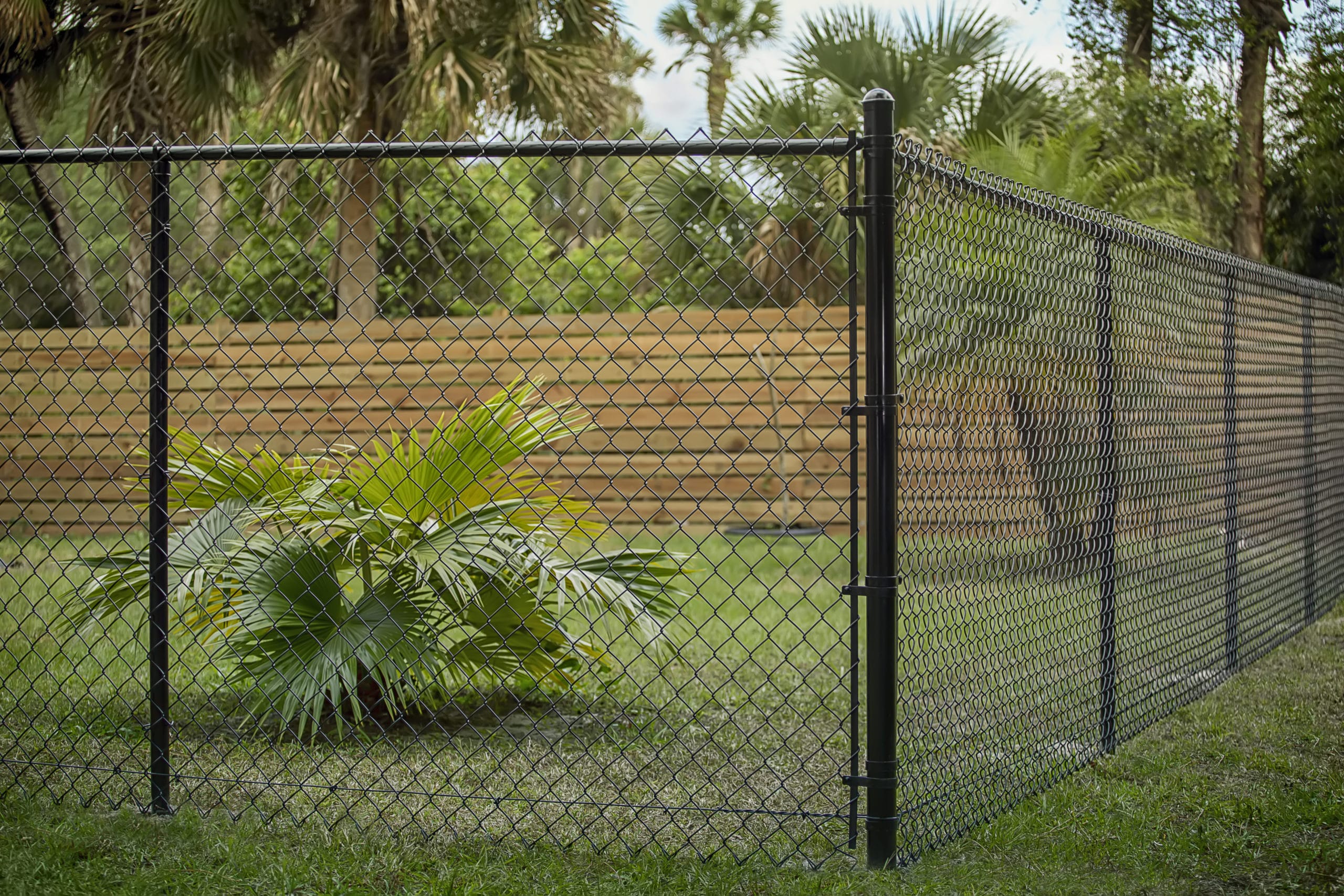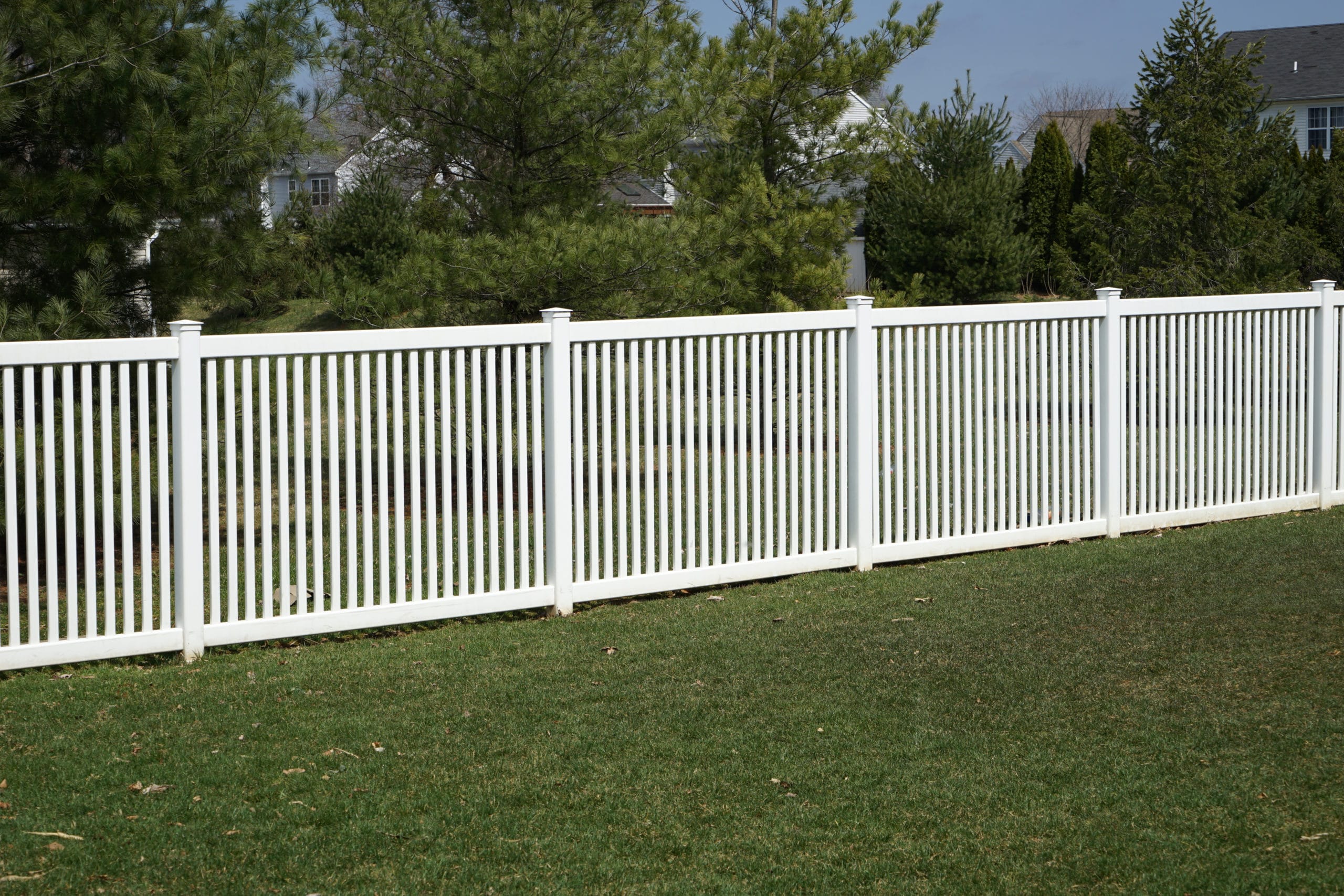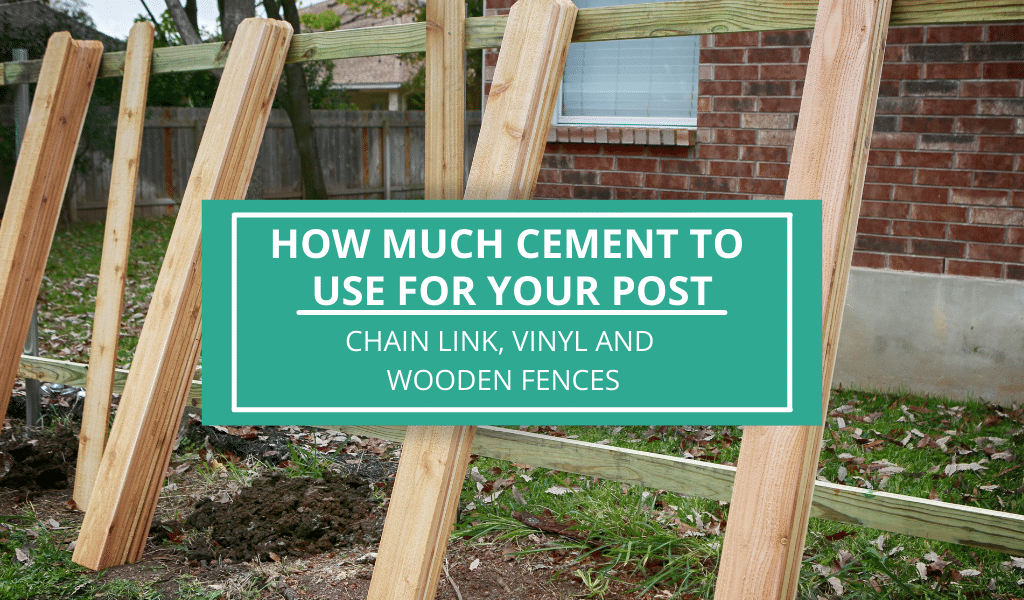There is nothing better than saving money and having the satisfaction of doing it yourself. But doing home improvement DIY projects can sometimes get tricky. A lot of homeowners end up just hiring a professional to finish the task that they started. One of these projects is installing your own fence. [If you're just in the planning process this fence installation cost guide will help you a lot!]
One particular process of installing a fence that does not seem very complex but is really a very important part of the process is setting your fence posts. This can be a make it or break it situation if not executed properly. When it comes to securing your yard and property, it is important to do it right.
To ensure that your fence is steady and will withstand weathering and the ravages of time, using the correct amount of cement is key. It will depend on a couple of factors but mainly, how much cement you will use depends on the type and the weight & size of the fence.
Importance of Setting Posts with Cement
When putting up your own fence you may think that burying your fence posts without cement may be enough. Although on the surface it may look and feel like your fence is secure, it will not last or stand up to the elements. Depending on your type of fence, it may take a lot of wear and tear over the years.
To Withstand Wind
The wind is a huge factor when it comes to the quality of your fence over time. High winds can pull and push the fence back and forth which will loosen the posts if they're not cemented.
To Withstand Ground Shift
The ground also shifts as the weather changes throughout the year. These shifts can loosen the earth around your post and make your fence wobbly and insecure. Setting your posts in cement is an absolute necessity if you want a fence that is going to stand up to both the elements and time.
What Type of Cement Should You Be Using?
There are a few options when it comes to what type of cement you should be using to set your fence posts.
Quick-drying concrete
Quick-drying concrete is the most common and easy to use. Quick-drying concrete does not need to be mixed in a separate container before being used. All you must do is pour it into your hole, press in your post until it's all the way down, and hold it for a few seconds until it sets. Quick-drying concrete is also great if you want to get the entire fence put up within a few days.
Two-part concrete
If you want your post to stand up to absolutely anything, you can use a traditional high-strength two-part concrete. This method requires you to mix the concrete in a separate container. High-strength concrete will also take a longer time to set. However, it does provide a slightly more secure hold for your posts.
No matter what type of concrete you choose to use, make sure that you start by filling your hole with gravel.
A good gravel base will keep your post from sinking into the earth as your fence ages. It is also a good idea to use an agitator when setting your concrete. Getting all the air bubbles out will help the strength and durability of your cement.
Amount of Cement According to Fence Type
Wooden Fences

The most popular option for residential fences is wood. These fences usually require posts every six feet that hold panels of fencing six feet wide. These fences most commonly come in heights of six-foot and three-foot. The height and weight of your wood fence can determine how much cement you should use when setting your posts.
3ft Fence
Three-foot wooden fence posts require less cement than their six-foot counterparts. When setting wooden fence posts, you should always bury the post at least half the height of the post out of the ground.
For a three-foot fence, you should bury one and a 1/2 foot of your post. Your hole should be double the diameter of your post to be sure that you have enough cement to hold the post in place. For a three-foot post of traditional diameter, a 350-pound bag of cement should be just enough to set your post properly.
6ft Fence
Following these same rules, for a six-foot-high fence, you will need a post that is nine feet tall. You'll need to bury 3 feet of that post to make sure that it is secure. If you're using a traditional 4x4 fencepost, your hole should have a diameter of twelve inches. Filling this hole properly will require 550-pound bags of cement. Since a six-foot fence will take more wear and tear from the elements, digging a deeper hole is never a bad idea.
Chain Link Fences

Metal chain link fences follow a different set of rules when it comes to the amount of cement needed to set the posts. Chain link fences have two types of posts that require different amounts of cement:
Terminal Post
The first type of post in a chain link fence is called the terminal post. These are the posts that connect long distances of chain link fencing. These are usually outside of gates, at corners, and any other endpoint.
Terminal posts require a hole with an eight-inch diameter that is anywhere from thirty inches to three feet deep. It takes about .9 cubic feet to fill each of these holes. Three fifty-pound bags of concrete should be plenty to set each terminal post.
Line Post
The other type of post required for a chain link fence is called a line post. Line posts are used in between terminal posts to secure the fence every few dozen feet. Line posts hold less of the overall weight of the fence and therefore require less cement.
Line posts are smaller in diameter and require less depth when buried. Each line post should be placed in a hole that is two feet deep and six inches across.
These holes should require around .4 cubic feet of concrete to fill. This equates to just over a single fifty-pound bag of concrete to set a single line post. If you expect your chain link fence to experience a lot of wear and tear, it is always alright to dig your holes a little deeper.
Vinyl Fences

Vinyl fence posts are very similar to wood posts in size. Most vinyl posts are either 4x4 or 5x5 depending on the height of your fence. When installing your vinyl fence, be sure to do the most load-bearing post first. Put in your start and endpoints and any corners first so that you can make sure that every other post is aligned properly.
Many experts suggest using high-strength concrete on posts that will take most of the weight of the fence. If your vinyl fence has spaces for the wind to pass through freely, then quick-drying cement and a shallower depth may work for you.
3ft to 4ft Fence
If your vinyl fence is three to four feet high, you should bury your posts at least a foot deep in a nine-inch-wide hole. The taller that you make the fence, the deeper you should set your post. To set a 4x4 post on a three-to-four-foot vinyl fence, you will need between one and a half to two fifty-pound bags of cement.
6ft Fence
Six-foot vinyl fence posts usually come in 4x4 or 5x5 options based on the type of fencing that you are choosing to put up. Remember that bigger posts require deeper and wider holes with more cement. A 6-foot vinyl fence with 4x4 posts will require you to bury the post at least two and a half to three feet deep in a hole that is twelve inches wide.
A single post of this size will require roughly three to four fifty-pound bags of cement. A 5x5 post should be buried in a hole twelve to fifteen inches wide and three feet deep. For this, you will need roughly four to four and a half bags of cement.
Things to Remember When Setting Posts
Check for Utility Lines
Setting your fence posts will require you to dig holes up to three feet deep. When digging this deep into your yard it is always a great idea to check for utility lines ahead of time. Interfering with one of these lines could be dangerous and may result in serious damage. Having a service like a digger’s hotline or a city representative mark your utility lines can help you save money and time in the future.
Use Bracing System
It is also recommended to use some sort of bracing system to ensure that your posts are set straight. There is nothing more irritating than working with crooked fence posts. You can use 2x4s two brace your post in place as the cement dries. Running a line between your end posts and corners will help you keep your posts in a straight line through your entire project.
Use the Right Equipment
Always remember that safety comes first when doing it yourself, so be sure to use the right equipment properly to protect yourself and those around you. Setting fence posts can be a very labor-intensive project.
First, you will need to carry around hundreds of pounds of cement and your fencing material. Mixing cement and packing it into your holes with a post or 2x4 can also be a very physically demanding task. Be sure to only do the work that you can stay healthy and safe for all your future DIY projects.

